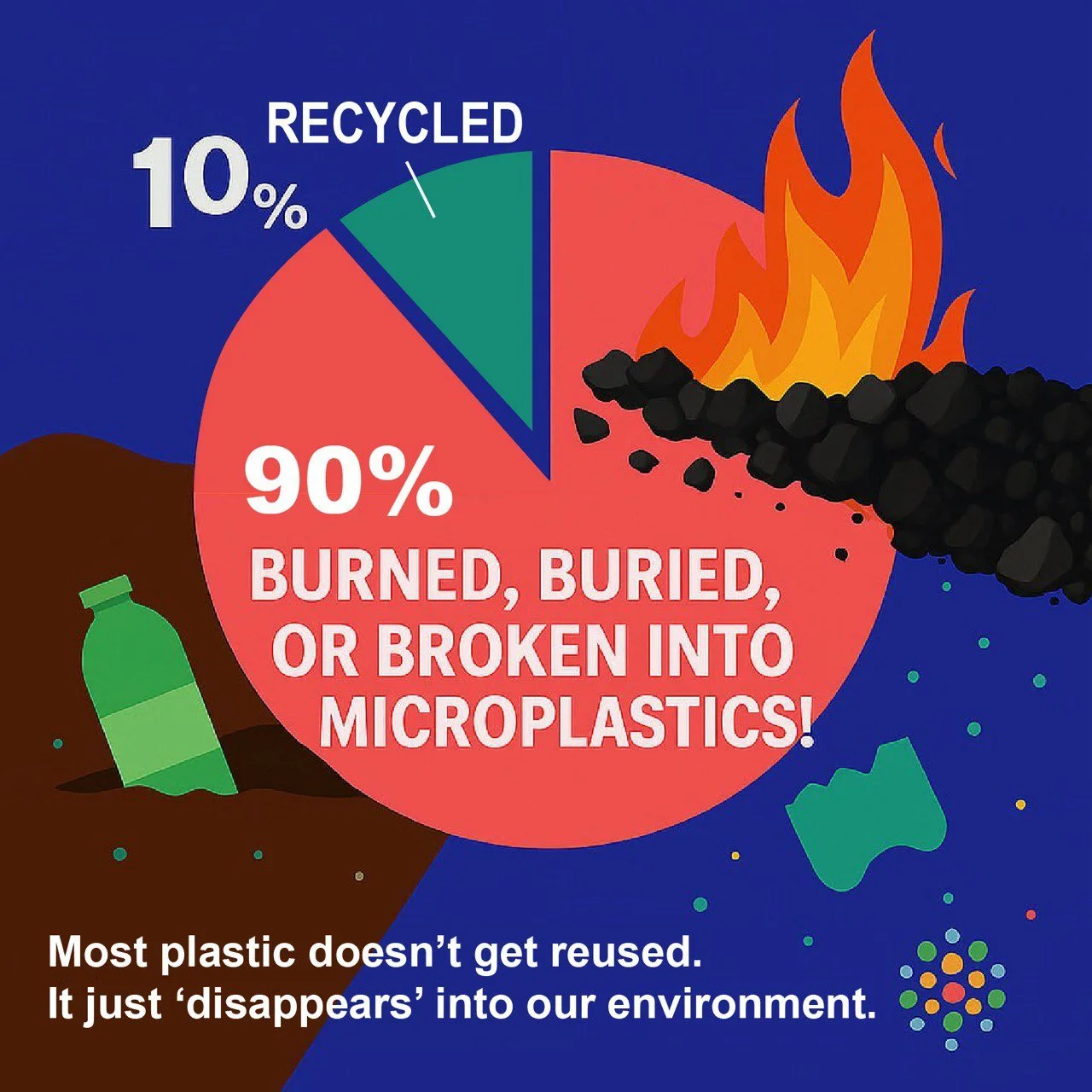Why Plastic Wasn’t the Problem (Until It Was)
Plastic made things possible: cheap medical tools, safe water transport, and lightweight packaging that powered global trade. But for all its utility, plastic’s downfall isn’t what it is. It’s what we failed to build around it.
We designed for volume, not return.
A breakdown revealing that 90% of plastic is either burned, buried, or broken into microplastics—highlighting the urgent need for better systems, not just better materials.
Plastic reuse and recycling rates are still shockingly low. Fewer than 10% of all plastics ever produced have been recycled. The rest are burned, dumped, or broken into microplastics now found in human blood and lungs (Life Cycle Assessment).
Even high-value plastic from companies like Apple, which invests in durable polymers for longevity, doesn’t guarantee reuse or closed-loop recycling. That takes infrastructure and behavioural systems we still haven’t built.
Why? Because recycled plastic is often more expensive than new (virgin) plastic, not mainly because it costs more to make, but because governments continue to subsidise fossil fuel production. These subsidies lower the price of oil and gas, making it artificially cheaper to manufacture new plastic than to collect and recycle old plastic.
To put it in perspective: in 2023 alone, global fossil fuel subsidies were so large that they exceeded the total funding governments committed to climate solutions: things like renewable energy projects, clean technology development, and programs to cut carbon emissions (Economic Times).
Policy is trying to catch up, but slowly. The EU, for instance, is requiring only 25% recycled content in new bottles by 2025 a minimal target, given the scale of the problem (Clean Energy Wire).
Key Takeaway:
Plastic itself isn’t the enemy. But without systems for return, reuse, and responsible pricing, we’re stuck treating it like a one-way material. It’s time to stop asking, “Is plastic bad?” and start asking, “What system do we need to make it work?”
Three steps you can take right now:
✅ Look for less packaging: When you shop, choose products with minimal or reusable packaging whenever you can.
✅ Reuse more, buy less: Try to refill, reuse, or repurpose options (and use them enough times to pass the break-even point where they outperform disposables.)
✅ Speak up: Tell your favourite brands you care about real recycling and reuse, not just green labels.
For more real-talk on sustainability systems, follow Mr. G - Galeno Chua and check out the Business Sustainability Accelerator.
📺 Watch the deep-dive explainer: here
